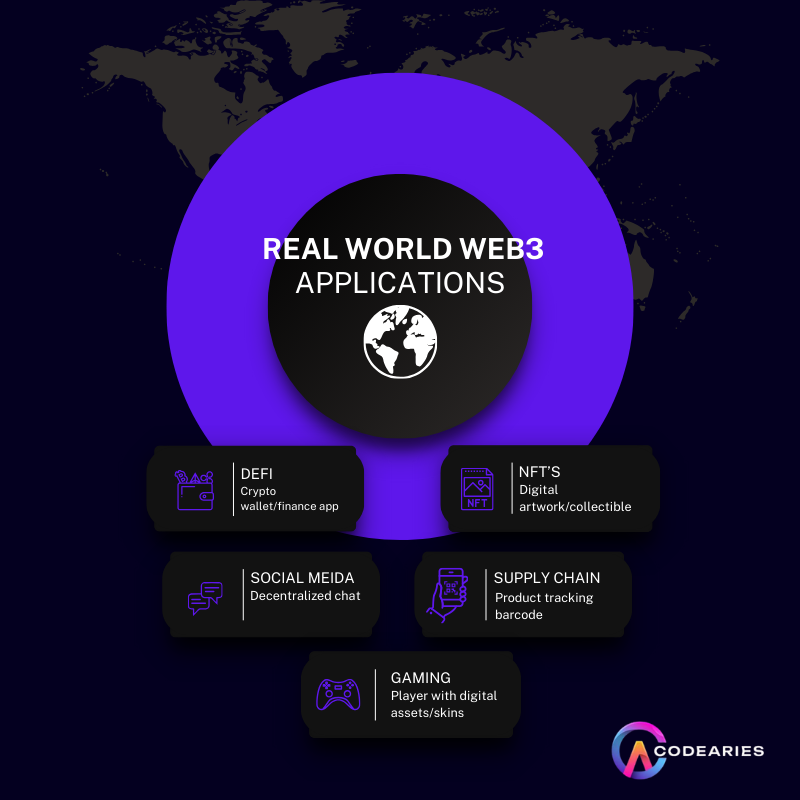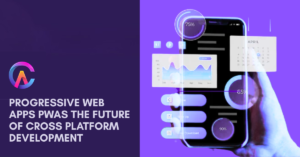The term “Web3” appears everywhere: in headlines, on Twitter, and throughout the tech startup world. But what does it really mean, and how does it change the internet experience for individuals, creators, and businesses?
Web3 is not just a marketing term or another Silicon Valley buzzword. It represents the next evolution of the Internet, promising more control, privacy, and participation for users. To grasp what’s truly at stake, let’s explore what Web3 is, how it works, what it addresses, and the new opportunities—and challenges—it brings.
The Evolution: Web1, Web2, and Web3
Web1: The “Read-Only” Era
The early Internet, or Web1 (roughly 1991–2004), was static. Websites were basic, users primarily consumed content, and creators published using open protocols like HTTP, SMTP, and FTP. Control was distributed; anyone with technical knowledge could launch a site, and everything was relatively open.
- User Role: Mostly readers, not creators.
- Tech: Static web pages, basic hyperlinks.
- Control: Decentralized, but limited in participation.
Web2: The “Read-Write” Social Internet
By the mid-2000s, the web entered its “social” phase—Web2. Platforms like Facebook, Google, and YouTube made it easy for users to consume and create content, interact with others, and run businesses. However, the price of convenience was centralization. A few tech giants now control vast amounts of our data, digital identities, and monetization streams.
- User Role: Readers, creators, social contributors.
- Tech: Dynamic web apps, social feeds, cloud computing.
- Control: Centralized—walled gardens with user data sold to advertisers.
- Result: Massive innovation, but also privacy erosion, censorship, and unequal control.
Web3: The “Read-Write-Own” Decentralized Internet
Web3 introduces a new paradigm by using blockchain, smart contracts, and decentralized networks. Its mission is to return power and control to users, not platforms.
- User Role: Owners, collaborators, true participants.
- Tech: Blockchain, cryptocurrencies, decentralized apps (dApps), self-sovereign identity, NFTs.
- Control: Decentralized—users own their data, digital goods, and even digital identities.

What Makes Web3 Different?
1. True User Ownership
In Web2, you don’t really “own” your Instagram posts, in-game items, or even your following. If a platform bans you, everything can disappear. In Web3, you control your digital assets—whether it’s art, tokens, identity, or access—on decentralized platforms run by code, not companies.
2. Self-Sovereign Identity
Web3 allows you to manage your digital identity through blockchain-based wallets and credentials. You decide who can access your information, login details, or credentials. No more relying on Facebook, Google, or other third parties for social login; your identity is portable and under your control.
3. Decentralized Applications (dApps)
Unlike traditional apps that run on centralized servers, dApps function peer-to-peer across a network. No single company owns or controls them. Popular dApps include decentralized exchanges like Uniswap, games like Axie Infinity, and social platforms like Lens Protocol.
4. Programmable Money and Digital Assets
Web3 supports smart contracts—pieces of code that execute automatically on-chain. These power a range of products from DeFi (Decentralized Finance)—loans, staking, trading, investments done with code—to digital collectibles (NFTs), and even gig work compensated directly, with no middlemen.
5. New Monetization Models for Creators
With Web3, artists, musicians, writers, and developers can earn directly: launch NFT collections, issue access passes, or receive tokens from fans and communities. Royalties, resale rights, and decentralized crowdfunding are just the start.
6. Censorship Resistance and Openness
In Web3, no single company can silence you or erase your data. Content, transactions, and communities exist on distributed ledgers, secure from arbitrary take-downs, payment freezes, or government overreach, as long as the network remains active.
How Web3 Changes Your Internet Experience
– Data Ownership
Your personal information, content, and connections are stored in secure wallets, not in corporate databases. You control who accesses your data, and you can revoke that access whenever you want.
– Financial Access
Anyone with a smartphone and internet connection can find global financial services—savings, payments, borrowing, investing—without needing a bank account or trusted third party. This is groundbreaking for the 1.7 billion “unbanked” people worldwide.
– Community-Driven Governance
Many Web3 projects operate under DAOs (Decentralized Autonomous Organizations), where users hold tokens and vote on decisions, upgrades, or fund allocation. Think of it as open-source companies run by their users and builders.
– Digital Scarcity and Creativity
NFTs and tokenized assets mean digital files like music, art, and event tickets can be unique, verifiable, and tradable. Creators can integrate royalties and restrictions directly into code.
– Interoperability
You aren’t locked into one service provider. Your social profile, reputation, earned tokens, and identity are portable—usable across apps, games, or new platforms without hassle.
Real-World Web3 Applications
- DeFi (Decentralized Finance): Lending, borrowing, trading, staking, and earning yield—all done via open protocols, not banks.
- NFT Marketplaces: Digital art, event tickets, domains, game items (OpenSea, Rarible, Magic Eden).
- Decentralized Social Platforms: Bluesky, Lens Protocol, Farcaster—no central authority.
- Supply Chain Traceability: Verifying product origin and sustainability (VeChain, IBM Food Trust).
- Web3 Gaming: Play-to-earn ecosystems and player-owned assets (Axie Infinity, The Sandbox, Decentraland).
- DAOs: Cooperative platforms for investment, development, media, and charity.

Challenges and Considerations
- User Experience: Managing wallets, private keys, and onboarding to platforms can still be too technical for many.
- Scalability: Networks like Ethereum can experience high fees or delays, though Layer 2 solutions are emerging.
- Security: Self-custody means users must handle their own security, and scams and hacks remain common.
- Regulation: Ongoing policy debates focus on privacy, consumer protection, and compliance.
- Ecosystem Immaturity: Many apps are still experimental, and standards are being developed in real time.
The Road Ahead
Web3 is just beginning its journey. As the technology improves—thanks to scalability upgrades, easier wallets, and clearer regulations—the vision of a user-owned, open, and borderless web becomes more achievable. For users, this means greater agency, fresh opportunities to earn, experiment, and create—and a shift from internet “user” to internet stakeholder.
How Codearies Helps You Unlock the Power of Web3
At Codearies, we aim to help you transition smoothly into the Web3 era—whether you’re a business, creator, startup, or community. We provide secure, scalable, and user-friendly Web3 solutions so you can confidently embrace the next internet.
What We Offer:
Custom Blockchain Development:
Build decentralized platforms, dApps, and protocols tailored to your vision—finance, gaming, identity, supply chain, or media.
NFT and Tokenization Platforms:
Launch NFT collections, digital asset marketplaces, share ownership systems, and innovative token economies.
Wallets and Self-Sovereign Identity:
Give your users digital wallets, credential management, secure logins, and cross-platform compatibility.
DeFi Integrations:
Enable lending, borrowing, trading, and yields through top-tier DeFi integrations—with compliance and strong security
DAO and Community Tools:
Create governance, voting, and reward systems for collaborative projects and creator communities
User Experience and Education:
Clear interfaces, onboarding flows, and multilingual documentation make the transition to Web3 easy for anyone.
Security, Compliance,
Smart contract audits, guidance on regulations, upgrades, and 24/7 technical support.
With Codearies, you get more than just code—you get a trusted partner guiding you through the shifting Web3 landscape and maximizing your project’s impact.
Frequently Asked Questions (FAQ)
What kinds of Web3 projects can Codearies help launch?
Everything from DeFi platforms and NFT collections to decentralized social apps, games, DAOs, supply chain solutions, and digital identity systems. We’ll support you at every stage—from concept to global scale.
How does Codearies ensure Web3 projects are secure?
Codearies carries out thorough smart contract audits, implements solid wallet security, and stays updated with the latest protocols and best security practices—keeping your users and assets safe.
Can Codearies integrate Web3 capabilities into existing Web2 apps or websites?
Yes! We specialize in embedding wallets, authentication, NFTs, token systems, and dApp features into existing digital products—bridging the old and new internet.
How does Codearies make Web3 user-friendly for non-technical customers?
We create straightforward interfaces, guide onboarding with tutorials, and offer support in several languages—making sure even first-time Web3 users have a smooth experience.
What ongoing support does Codearies offer after launch?
Full lifecycle support: technical maintenance, security updates, compliance monitoring, performance optimization, and strategic upgrades as your needs evolve.







